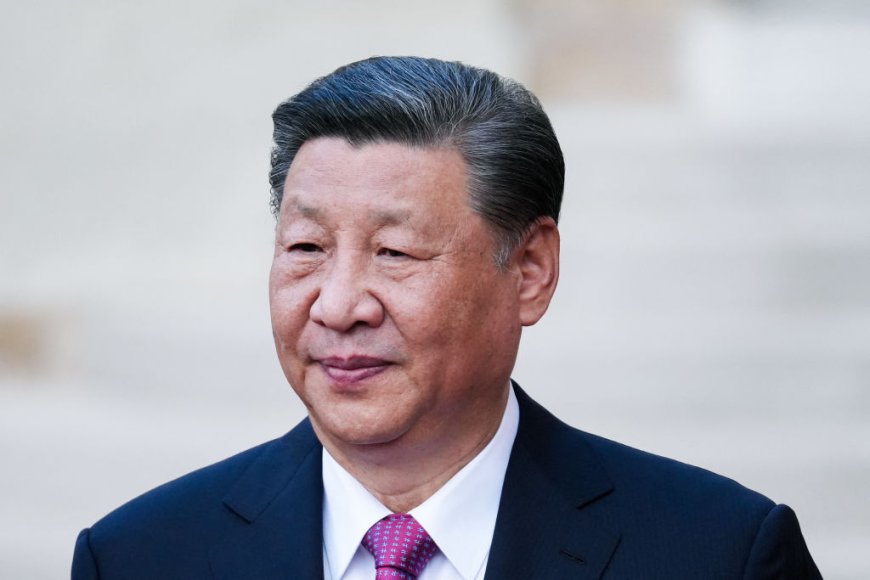Xi’s Southeast Asia Tour: A Defiant Call Against Protectionism as U.S. Trade Tensions Escalate
During his Southeast Asia tour, China's President Xi Jinping warned that protectionism “leads nowhere,” urging ASEAN nations to uphold multilateral trade amid U.S. tariff pressures and escalating trade friction.

Beijing / Hanoi / Kuala Lumpur / Phnom Penh, April 2025 — Chinese President Xi Jinping began a high-profile state tour to Vietnam, Malaysia, and Cambodia, issuing a pointed warning that protectionism “leads nowhere” and that trade wars produce no winners. The tour comes at a critical juncture as heightened U.S. tariffs—peaking at 145 percent on Chinese exports—reshape global economic alignments.The Times of India+11France 24+11Arab News+11
A Multinational Message in a Pressure-Cooker Moment
In an opinion piece published by Vietnam’s Nhân Dân newspaper, Xi underscored Southeast Asia’s role in preserving global trade stability. He urged ASEAN partners to “resolutely safeguard the multilateral trading system” and resist unilateral disruptions to supply chains and industrial networks.The Guardian+1Arab News+1 His remarks came in stark contrast to U.S. trade policies under former President Trump, which had inflicted steep tariffs on China and its neighbors, including 46 percent on Vietnam and 24 percent on Malaysia.Cato Institute+3Carnegie Endowment+3Wikipedia+3
Through each stop—Vietnam on April 14–15, followed by Malaysia and Cambodia—Xi ratcheted up appeals for closer integration while rejecting rising tariff-driven isolation. As he witnesseda flurry of cooperation deals and formal statements, he consistently framed China as a reliable economic anchor in contrast to U.S. unpredictability.Yahoo+15Wikipedia+15Carnegie Endowment+15
High-Stakes Diplomacy vs. Tariff Shockwaves
Xi’s regional diplomacy aligns with broader Chinese strategy to counterbalance the effects of major U.S. tariffs. In April 2025 alone, Washington imposed duties as high as 145 percent on Chinese exports. Beijing responded with retaliatory tariffs of 34 percent on U.S. imports and restrictions on strategic exports such as rare earth elements.Wikipedia The net result has been a recalibration of supply chains, with ASEAN emerging as a critical alternative for Chinese exports. Recent data show acceleration in investments and bilateral projects spanning rail, AI, energy and green growth.Carnegie EndowmentRadioFreeEurope/RadioLiberty
Meanwhile, U.S. authorities have targeted transshipment—espionage routes where Chinese goods are rerouted through Southeast Asian ports to skirt tariffs—with legal and regulatory pressure. Such moves risk fragmenting global supply chains unless multilateral coordination is restored.washingtonpost.com
Why Xi Is Leaning into Asia Now
Xi’s timing is strategic. China’s ASEAN trade partnership has reached new heights, with bilateral trade exceeding USD 234 billion in just the first quarter of 2025. Negotiations over the upgraded ASEAN-China Free Trade Area 3.0 aim to expand into digital and green sectors—solidifying a more resilient trade ecosystem.reuters.com
With U.S.-China negotiations underway in Stockholm, drawing closer to a possible extension of a tariff truce that expires on August 12, Xi’s outreach offers a risk-hedging narrative: deepen ties within Asia, shield economic interests from unilateral sanctions, and provide an alternative narrative of global cooperation.AP News+1reuters.com+1
Key Messages from the Tour Stops
Vietnam (April 14–15)
Xi received high-protocol welcomes and signed over forty cooperation memoranda focused on rail infrastructure, AI collaboration, and energy management. He called out U.S. policies implicitly, urging Vietnam to reduce reliance on unilateral trade alliances.Carnegie EndowmentRadioFreeEurope/RadioLiberty
Malaysia (April 16)
In Kuala Lumpur, Xi and Malaysian Prime Minister Anwar Ibrahim exchanged 31 pacts across trade, tourism, agriculture and logistics. In a shared function, Xi urged Asian nations to "resist geopolitical confrontation and protectionism.”reuters.com
Cambodia (April 17–18)
Xi pledged to help build China–Cambodia resilience, announced cultural-educational exchanges, and lauded Cambodia’s neutrality in global politics. His presence reinforced Beijing’s narrative of being a dependable strategic partner.WikipediaWikipedia
What It Means for Southeast Asia and Beyond
-
Strategic Hedging by ASEAN: Nations like Vietnam and Malaysia are balancing between U.S. and Chinese interests—deepening cooperation with Beijing for economic stability, while maintaining diplomatic ties with Washington.Carnegie EndowmentWar on the Rocks
-
Trade Realignment: With huge U.S. tariffs and escalating trade controls, ASEAN is poised to become a major beneficiary of diverted supply chains and Chinese investment flows. The upgraded FTA and ongoing infrastructure projects signal China’s long-term strategic commitment.reuters.comRadioFreeEurope/RadioLiberty
-
Pressure on U.S. Trade Reach: Washington’s push to restrict Chinese transshipment through ASEAN is fostering resentment and pushing partner countries to resist siding with U.S. protectionist policies.China-US Focus
Takeaways: Xi’s Message Is Threefold
| Element | Substance |
|---|---|
| Economic pitch | China presents itself as a stable, multilateral trade partner amid U.S. tariff uncertainty. |
| Diplomatic tone | Xi’s subtler messaging avoids naming the U.S., while emphasizing unity and open markets. |
| Regional strategy | ASEAN nations are being positioned as partners in a China-led economic hub. |
This approach stands in contrast to U.S. leadership rhetoric and closer aligns with Beijing’s vision of a more integrated Asian economic order.
What’s Next
As U.S. and Chinese officials negotiate a potential tariff extension in Stockholm, Xi’s geopolitical offensive gains urgency. A possible Trump–Xi summit at APEC later this year could hinge on these diplomacy tracks.Arab Newsnypost.com Meanwhile, businesses are reassessing supply routes and investment windows—anticipating either renewed trade disruption or stabilization depending on outcomes.
Conclusion
Xi Jinping’s Southeast Asia tour arrives at a pivotal moment in global trade history. Amid rising U.S. economic unilateralism, his message is clear: protectionism undermines everyone, integration offers better chances. By reinforcing China’s role as a reliable partner and boosting regional economic ties, Xi aims to build an alternative to amid sky‑high tariffs and uncertainty. As trade talks continue and global markets remain sensitive, the implications of this strategic outreach are likely to reverberate far beyond Asia.









